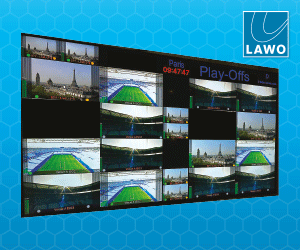The Luno Programme is part of NGA's strategy to support defence and intelligence operations with accessible commercial data.
 SatVu, a frontrunner in high-resolution thermal imaging from space, has announced a strategic partnership with five key industry players to support the National Geospatial-Intelligence Agency’s (NGA) Luno A and Luno B programmes. Through these collaborations, the NGA will gain access to cutting-edge commercial data aimed at strengthening defence and intelligence operations.
SatVu, a frontrunner in high-resolution thermal imaging from space, has announced a strategic partnership with five key industry players to support the National Geospatial-Intelligence Agency’s (NGA) Luno A and Luno B programmes. Through these collaborations, the NGA will gain access to cutting-edge commercial data aimed at strengthening defence and intelligence operations.
The Luno B initiative is a cornerstone of the NGA’s broader plan to integrate commercial geospatial intelligence (GEOINT) into national security frameworks. With a focus on unclassified, high-quality data and advanced analytics powered by artificial intelligence, the programme is designed to deliver timely insights that support critical decision-making across a wide range of security scenarios.
As part of this effort, SatVu will contribute its advanced thermal imaging technology, integrating it with complementary data provided by its teammates and Prime Contractors. This integration will allow the NGA to monitor global activity in difficult conditions, such as low-light or obscured environments. The thermal data will enhance the agencys ability to detect hidden trends, anticipate potential outcomes, and react swiftly to emerging challenges or opportunities.
The collaboration aims to significantly elevate geospatial intelligence capabilities. By fusing SatVus thermal imagery with AI-enhanced analytics, the programme will provide deeper insights into industrial changes, infrastructure developments, and urban activity that often go undetected by traditional sensors. It will also enable more precise monitoring of global economic trends through supply chain and industrial analysis, as well as deliver actionable intelligence to military and policy leaders.
Speaking on the partnership, SatVu Founder and CEO, Anthony Baker, said: “Our collaboration with industry leaders reflects a shared commitment to advancing geospatial intelligence for national security and global resilience. By integrating SatVus high-resolution thermal imagery with cutting-edge data and analytics, were delivering a new activity layer to support mission-critical decision-making in the NGAs Luno B programme.”
Looking ahead, SatVu plans to further enhance its space-based capabilities with the launch of its next-generation thermal satellites. HotSat-2 is set for deployment in the fourth quarter of 2025, followed by HotSat-3 within the following year, positioning the company to provide real-time, high-resolution thermal intelligence at an unprecedented scale.







































































